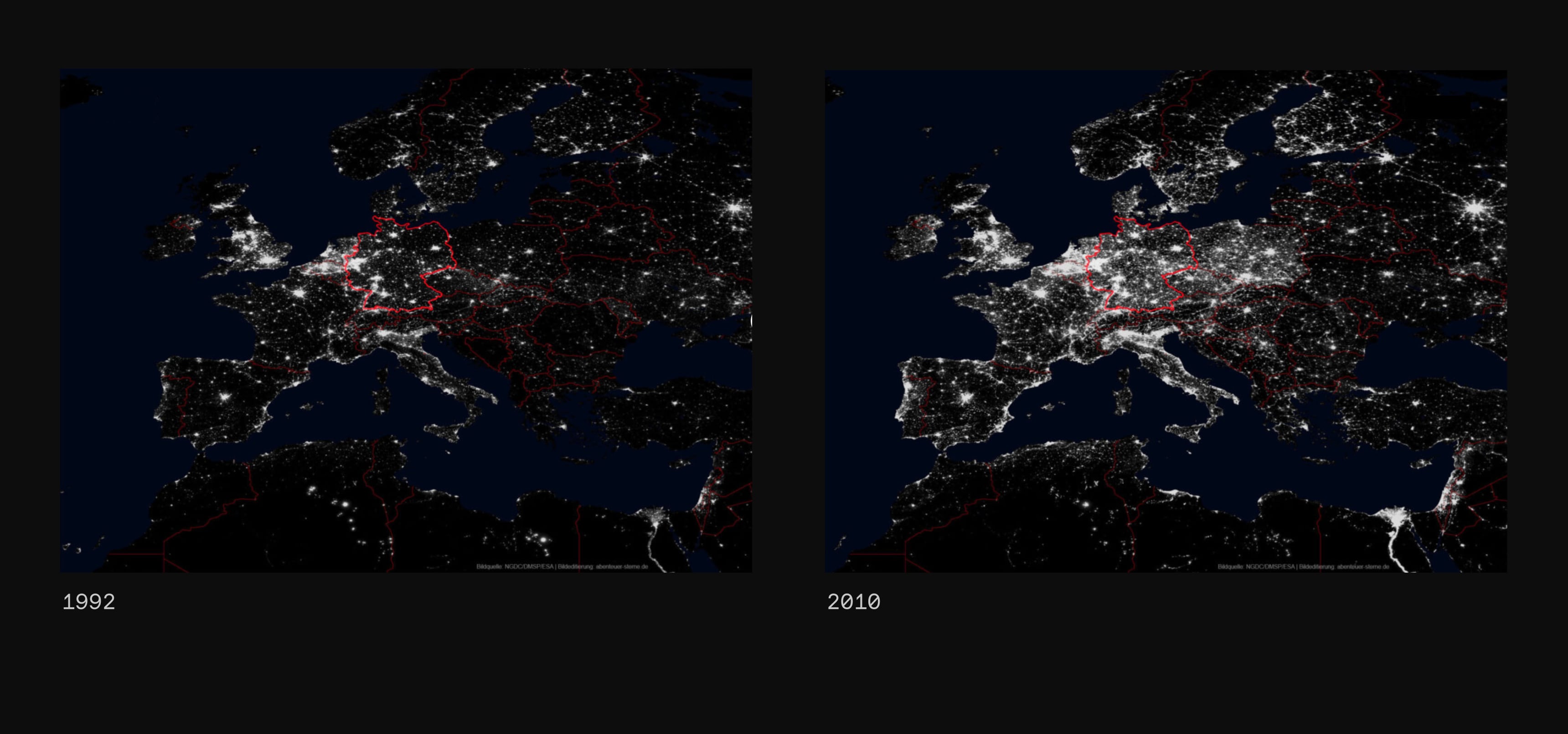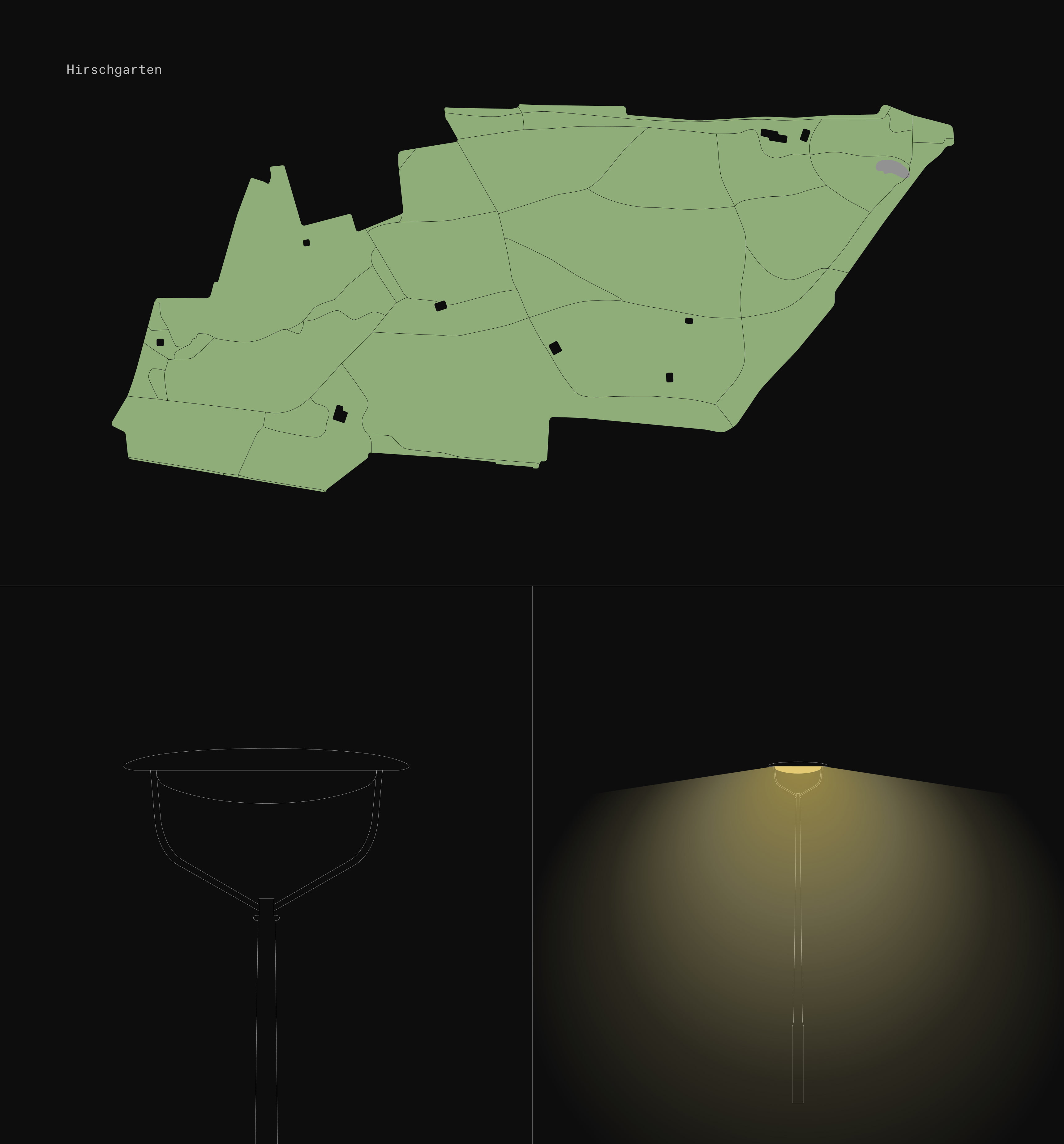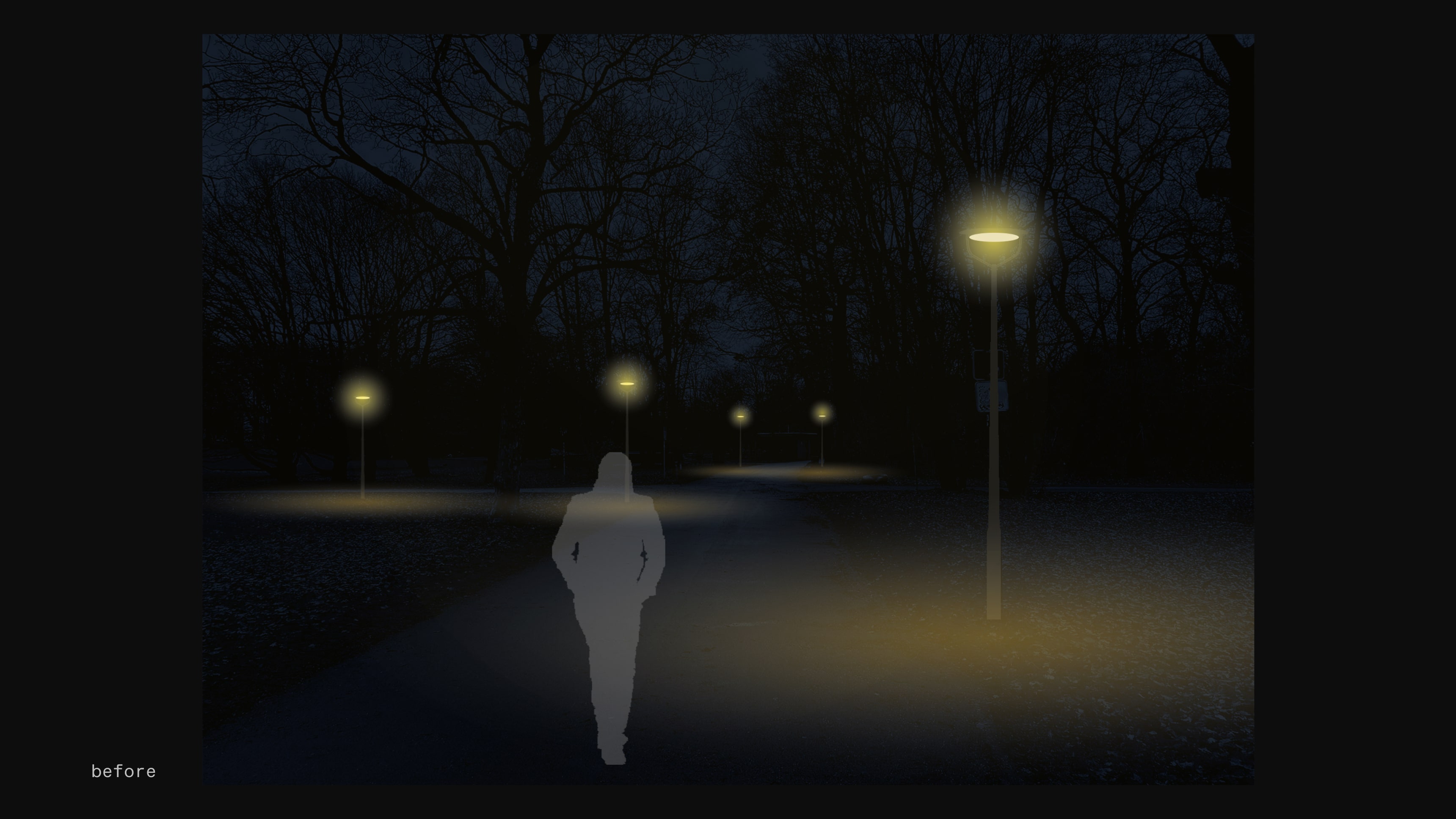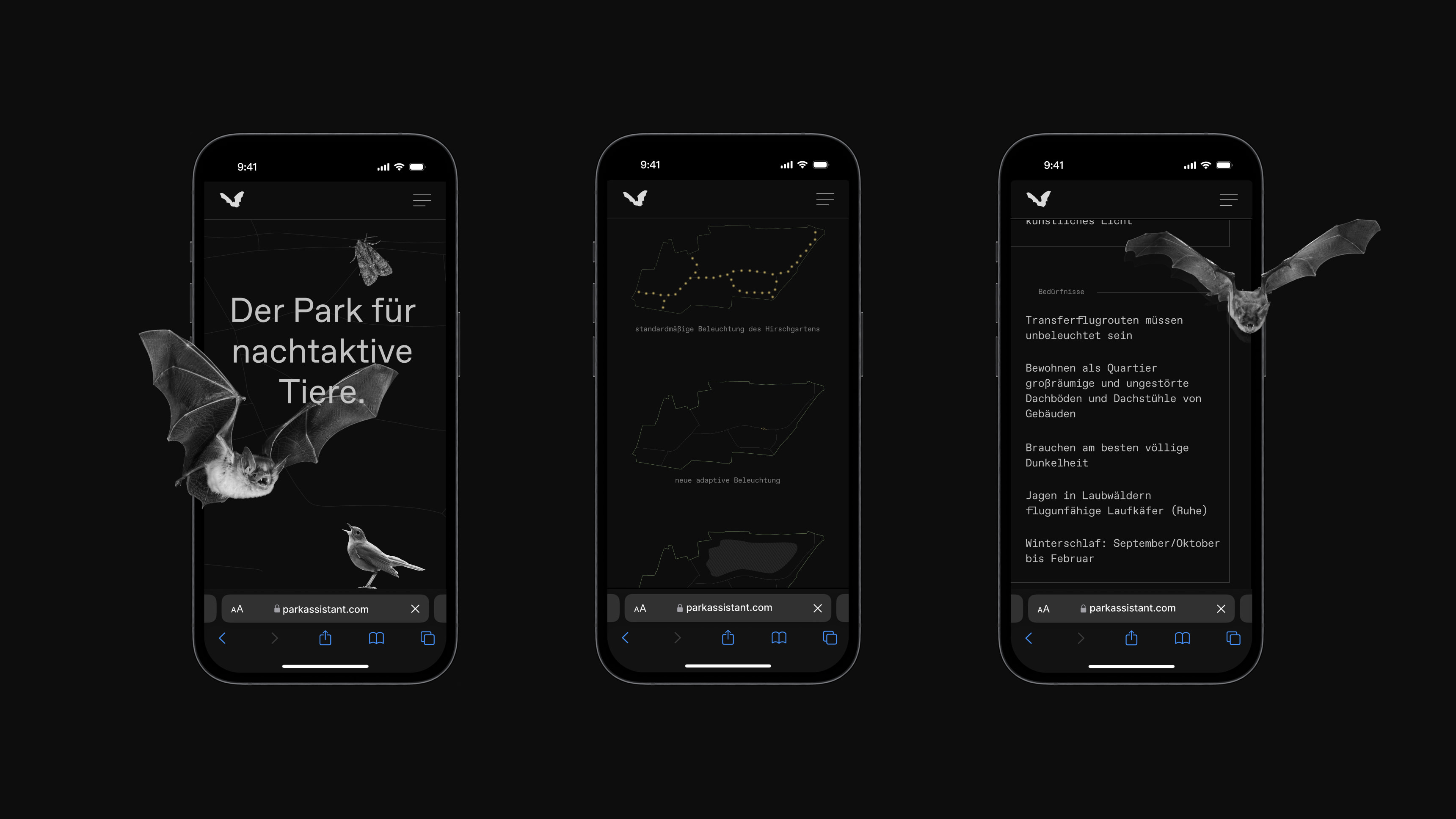Adaptive Park Lighting
With a focus on sustainability and respect for nature, this project aims to prevent light pollution in order to protect nocturnal ecosystems. Through the use of adaptive lighting technology, this system responds only to human presence, ensuring minimal disruption to wildlife while ensuring a safe experience for humans. In addition, an explanatory website helps visitors to find out more information about the project and learn about the animals in this park.
This project will be exhibited at the Munich Creative Business Week 2024 with the topic „How to Co-Create with Nature“

Light pollution
Every year millions of birds getting injured or dying by colliding with buildings and towers due to bright city lights during migration. Many insects are attracted to the light and are completely trapped flying around the light source until they die. Additionally, excessive lighting near water disrupts aquatic ecosystems, affecting species interactions and biodiversity. These and many more are causes of light pollution for animals, our environment and also for us humans. As if that weren't enough, light pollution is even increasing by 6% every year (in Europe). In my project, I have dedicated myself to exactly this problem.

Problems
I chose the Hirschgarten in Munich as the location to apply my concept there as an example. First, I analyzed the entire park and looked at the current lighting there. Although the light from the streetlights cannot shine upwards, it still shines too far outwards, causing unnecessary light pollution. Besides that, the street lights are lit all night long. In addition, some smaller paths are illuminated that do not necessarily need to be illuminated.

Concept
I next looked at what animals live in the park and which ones are particularly affected by light pollution. Amongst several animal species, I then decided on a very light-sensitive bat species, as this represents many of the problems of nocturnal animals very well. As bats move by flying, this light system is located on the ground to reduce the light in the air. Because bats are very much disturbed by artificial light, this park is permanently dark in its normal state, and the lights only go on when there is human movement. The lights go on as the person is walking through the park and guide them through while ensuring a safe experience for them. The light color of the lights is also very warm at 1800K, which has a positive effect on insects and is less harmful to them.




Website
I also designed a website for my project, which can be accessed via QR codes on signs at the park entrances. On this website, users can find information about the park concept, how exactly the lighting works and what advantages it has over the current lighting. I wanted to prevent park visitors from feeling lost and confused about the new parking concept. The website also provides information about light pollution and its negative effects on nature, animals and us humans. Users can also find information on the website about the animals living in the park, their needs and problems.



